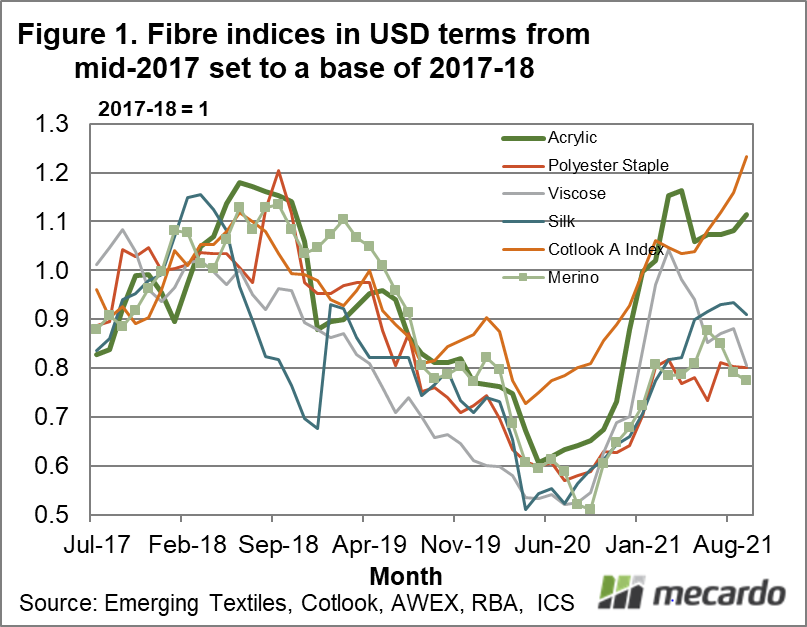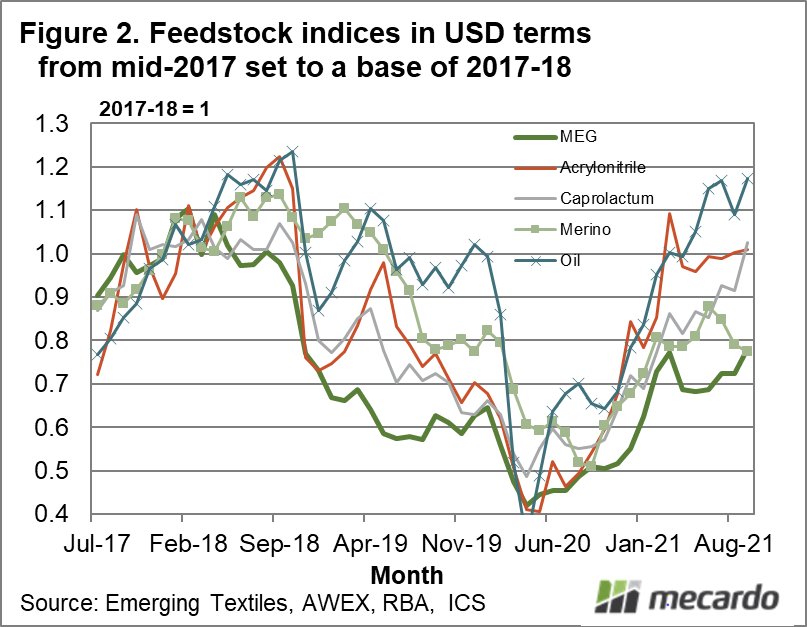As the greasy wool market steps its way gingerly through the southern spring markets it is time to check out what is happening in the wider apparel fibre complex from a price perspective.
In May, when Mecardo last looked at apparel fibre prices, the conclusion was that the rebound in price from the low levels reached in mid-2020 had run its course and prices were stabilising. Figure 1 brings schematic from early May up to date with September data. The graphic shows changes in a range of apparel fibre prices from mid-2017 onwards with the average price of 2017-18 for each fibre set to equal 1. This allows a quick comparison of the relative movements of the different fibres which operate at quite different price levels.
Since May, only cotton has picked up significantly in price. The viscose price (in US dollar terms) has eased while the merino prices have gone up (in June) and then fallen again. In general price levels have not changed greatly.
Figure 2 shows a similar analysis for manmade fibre feedstock and crude oil, with the merino price added for comparison. While the oil price has risen strongly, the feedstocks for acrylics (AN) and for polyester staple (MEG) have not followed while the nylon feedstock (caprolactum) has risen. While the oil price in general has followed similar cycles to the feedstock (and fibre) prices, in these schematics, notice that the oil price did not fall heavily in 2019 when apparel fibre prices were clearly trending downwards. The oil price only really plummets in early 2020, as the extent of the pandemic became apparent. It is a small example showing that while oil is intimately associated with many manmade fibres, the relationship between oil and manmade fibres is not simply a strong positive correlation.
While recent apparel fibre prices imply prices are comfortable at current levels, events in China might be about to change things. At the very least the power shortages to mills in China will cause uncertainty in markets such as our greasy wool market.
What does it mean?
Looking backwards over the past year, the recovery in apparel fibre prices looks to be a solid one. This is good news for merino prices, but no solace for crossbred prices. In looking forward, the current power shortages in China, now, increase the uncertainty in the greasy wool market, as it is about to pass through October which is traditionally a tricky time of the year.
Have any questions or comments?
Key Points
- Apparel fibre prices have generally drifted sideways since the autumn, with the exception of cotton.
- While energy prices have risen strongly, manmade feedstock prices have not generally followed.
- Overall apparel fibre prices looked to have settled after their recovery from low levels reached in mid-2020.
- Power shortages within China might be about to shake these markets up.
Click to expand
Click to expand
Data sources: Emerging Textiles, Cotlook, RBA, AWEX, ICS



